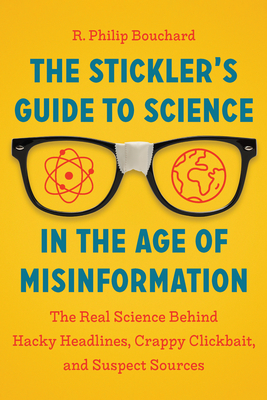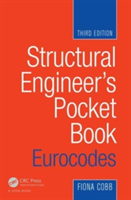The Stickler's Guide to Science in the Age of Misinformation: The Real Science Behind Hacky Headlines, Crappy Clickbait, and Suspect Sources - R. Philip Bouchard
de: R. Philip Bouchard
Publicat de: Timber Press (OR)
Anunta-ma cand revine pe stoc!The Real Science Behind Hacky Headlines, Crappy Clickbait, and Suspect Sources
We have more scientific information at our fingertips today than ever before. And more disinformation too. Online, on television, and in print, science is often communicated through shorthand analogies and phrases that obscure or omit important facts. "Superfoods," "right- and left-brained" people, and "global warming" may be snappy and ear-catching but are they backed by scientific facts? Lifelong educator R. Philip Bouchard is a stickler for this kind of thing, and he is well-prepared to set the record straight.
The Stickler's Guide to Science in the Age of Misinformation unpacks the many misuses of terms we see used every day, revealing how these popular "scientific" concepts fall short of real science. Find out why trees do not "store" carbon dioxide; a day is not actually 24 hours; DNA cannot provide a "blueprint" for a human being; and an absence of gravity is not the reason that astronauts float in space.
With The Stickler's Guide to Science in the Age of Misinformation, Bouchard makes hard science go down easy, satisfying curiosity and sparking further inquiry that will keep you from getting fooled again.
We have more scientific information at our fingertips today than ever before. And more disinformation too. Online, on television, and in print, science is often communicated through shorthand analogies and phrases that obscure or omit important facts. "Superfoods," "right- and left-brained" people, and "global warming" may be snappy and ear-catching but are they backed by scientific facts? Lifelong educator R. Philip Bouchard is a stickler for this kind of thing, and he is well-prepared to set the record straight.
The Stickler's Guide to Science in the Age of Misinformation unpacks the many misuses of terms we see used every day, revealing how these popular "scientific" concepts fall short of real science. Find out why trees do not "store" carbon dioxide; a day is not actually 24 hours; DNA cannot provide a "blueprint" for a human being; and an absence of gravity is not the reason that astronauts float in space.
With The Stickler's Guide to Science in the Age of Misinformation, Bouchard makes hard science go down easy, satisfying curiosity and sparking further inquiry that will keep you from getting fooled again.
We have more scientific information at our fingertips today than ever before. And more disinformation too. Online, on television, and in print, science is often communicated through shorthand analogies and phrases that obscure or omit important facts. "Superfoods," "right- and left-brained" people, and "global warming" may be snappy and ear-catching but are they backed by scientific facts? Lifelong educator R. Philip Bouchard is a stickler for this kind of thing, and he is well-prepared to set the record straight.
The Stickler's Guide to Science in the Age of Misinformation unpacks the many misuses of terms we see used every day, revealing how these popular "scientific" concepts fall short of real science. Find out why trees do not "store" carbon dioxide; a day is not actually 24 hours; DNA cannot provide a "blueprint" for a human being; and an absence of gravity is not the reason that astronauts float in space.
With The Stickler's Guide to Science in the Age of Misinformation, Bouchard makes hard science go down easy, satisfying curiosity and sparking further inquiry that will keep you from getting fooled again.
We have more scientific information at our fingertips today than ever before. And more disinformation too. Online, on television, and in print, science is often communicated through shorthand analogies and phrases that obscure or omit important facts. "Superfoods," "right- and left-brained" people, and "global warming" may be snappy and ear-catching but are they backed by scientific facts? Lifelong educator R. Philip Bouchard is a stickler for this kind of thing, and he is well-prepared to set the record straight.
The Stickler's Guide to Science in the Age of Misinformation unpacks the many misuses of terms we see used every day, revealing how these popular "scientific" concepts fall short of real science. Find out why trees do not "store" carbon dioxide; a day is not actually 24 hours; DNA cannot provide a "blueprint" for a human being; and an absence of gravity is not the reason that astronauts float in space.
With The Stickler's Guide to Science in the Age of Misinformation, Bouchard makes hard science go down easy, satisfying curiosity and sparking further inquiry that will keep you from getting fooled again.
We have more scientific information at our fingertips today than ever before. And more disinformation too. Online, on television, and in print, science is often communicated through shorthand analogies and phrases that obscure or omit important facts. "Superfoods," "right- and left-brained" people, and "global warming" may be snappy and ear-catching but are they backed by scientific facts? Lifelong educator R. Philip Bouchard is a stickler for this kind of thing, and he is well-prepared to set the record straight.
The Stickler's Guide to Science in the Age of Misinformation unpacks the many misuses of terms we see used every day, revealing how these popular "scientific" concepts fall short of real science. Find out why trees do not "store" carbon dioxide; a day is not actually 24 hours; DNA cannot provide a "blueprint" for a human being; and an absence of gravity is not the reason that astronauts float in space.
With The Stickler's Guide to Science in the Age of Misinformation, Bouchard makes hard science go down easy, satisfying curiosity and sparking further inquiry that will keep you from getting fooled again.
We have more scientific information at our fingertips today than ever before. And more disinformation too. Online, on television, and in print, science is often communicated through shorthand analogies and phrases that obscure or omit important facts. "Superfoods," "right- and left-brained" people, and "global warming" may be snappy and ear-catching but are they backed by scientific facts? Lifelong educator R. Philip Bouchard is a stickler for this kind of thing, and he is well-prepared to set the record straight.
The Stickler's Guide to Science in the Age of Misinformation unpacks the many misuses of terms we see used every day, revealing how these popular "scientific" concepts fall short of real science. Find out why trees do not "store" carbon dioxide; a day is not actually 24 hours; DNA cannot provide a "blueprint" for a human being; and an absence of gravity is not the reason that astronauts float in space.
With The Stickler's Guide to Science in the Age of Misinformation, Bouchard makes hard science go down easy, satisfying curiosity and sparking further inquiry that will keep you from getting fooled again.
We have more scientific information at our fingertips today than ever before. And more disinformation too. Online, on television, and in print, science is often communicated through shorthand analogies and phrases that obscure or omit important facts. "Superfoods," "right- and left-brained" people, and "global warming" may be snappy and ear-catching but are they backed by scientific facts? Lifelong educator R. Philip Bouchard is a stickler for this kind of thing, and he is well-prepared to set the record straight.
The Stickler's Guide to Science in the Age of Misinformation unpacks the many misuses of terms we see used every day, revealing how these popular "scientific" concepts fall short of real science. Find out why trees do not "store" carbon dioxide; a day is not actually 24 hours; DNA cannot provide a "blueprint" for a human being; and an absence of gravity is not the reason that astronauts float in space.
With The Stickler's Guide to Science in the Age of Misinformation, Bouchard makes hard science go down easy, satisfying curiosity and sparking further inquiry that will keep you from getting fooled again.
We have more scientific information at our fingertips today than ever before. And more disinformation too. Online, on television, and in print, science is often communicated through shorthand analogies and phrases that obscure or omit important facts. "Superfoods," "right- and left-brained" people, and "global warming" may be snappy and ear-catching but are they backed by scientific facts? Lifelong educator R. Philip Bouchard is a stickler for this kind of thing, and he is well-prepared to set the record straight.
The Stickler's Guide to Science in the Age of Misinformation unpacks the many misuses of terms we see used every day, revealing how these popular "scientific" concepts fall short of real science. Find out why trees do not "store" carbon dioxide; a day is not actually 24 hours; DNA cannot provide a "blueprint" for a human being; and an absence of gravity is not the reason that astronauts float in space.
With The Stickler's Guide to Science in the Age of Misinformation, Bouchard makes hard science go down easy, satisfying curiosity and sparking further inquiry that will keep you from getting fooled again.
We have more scientific information at our fingertips today than ever before. And more disinformation too. Online, on television, and in print, science is often communicated through shorthand analogies and phrases that obscure or omit important facts. "Superfoods," "right- and left-brained" people, and "global warming" may be snappy and ear-catching but are they backed by scientific facts? Lifelong educator R. Philip Bouchard is a stickler for this kind of thing, and he is well-prepared to set the record straight.
The Stickler's Guide to Science in the Age of Misinformation unpacks the many misuses of terms we see used every day, revealing how these popular "scientific" concepts fall short of real science. Find out why trees do not "store" carbon dioxide; a day is not actually 24 hours; DNA cannot provide a "blueprint" for a human being; and an absence of gravity is not the reason that astronauts float in space.
With The Stickler's Guide to Science in the Age of Misinformation, Bouchard makes hard science go down easy, satisfying curiosity and sparking further inquiry that will keep you from getting fooled again.
| General | |
| Anul | 2021 |
| Autor | R. Philip Bouchard |
| Categoria | Research & Methodology |
| Editie | Paperback |
| Editura | Timber Press (OR) |
| Pagini | 280 |






